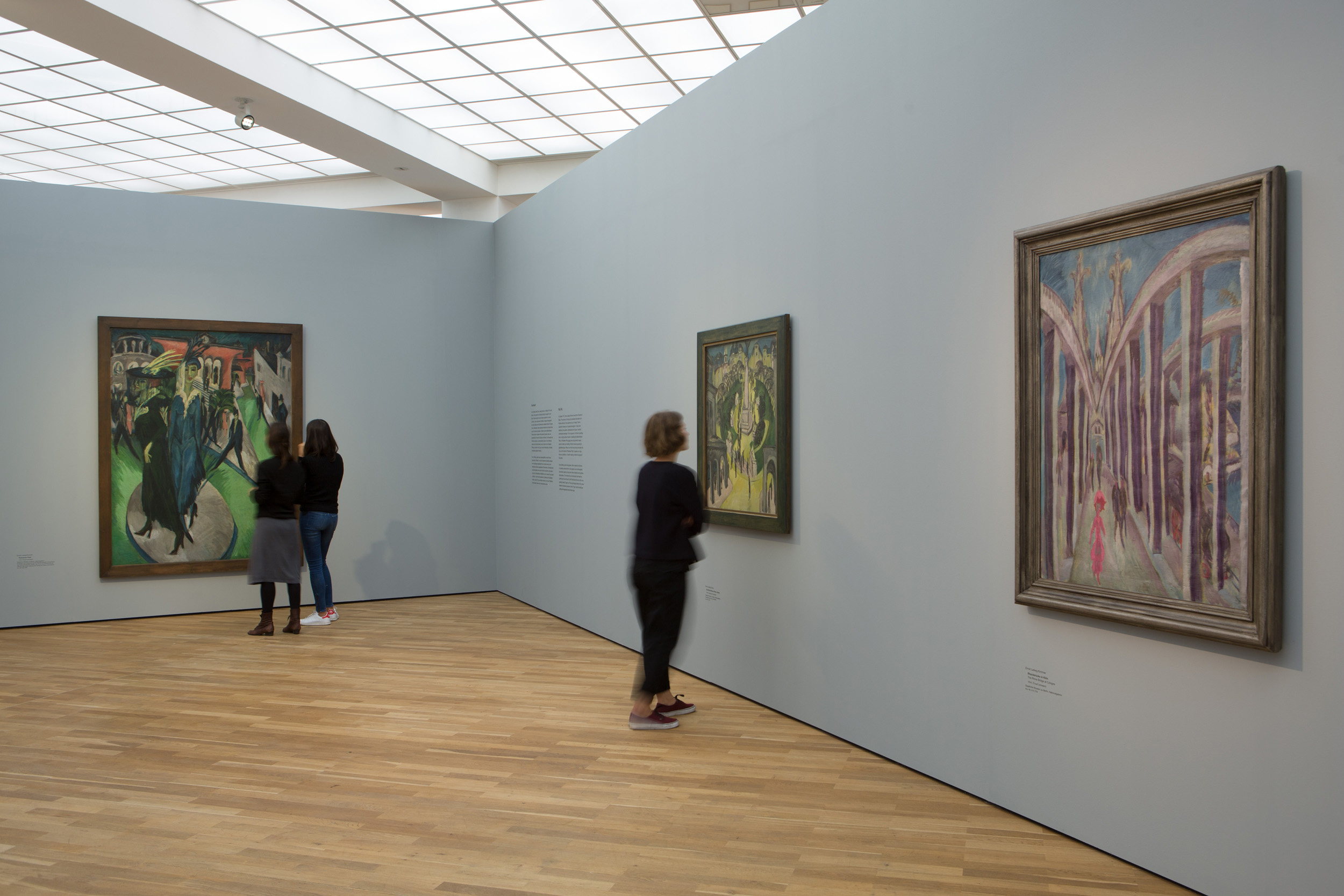

Ernst Ludwig Kirchner: Hieroglyphs
Ernst Ludwig Kirchner: Potsdamer Platz, 1914 | © bpk / State Museums in Berlin, National Gallery / Jörg P. Anders / Ernst Ludwig Kirchner: Frauenkirch in Winter, 1918/19 / © bpk / State Museums in Berlin, National Gallery / Jörg P. Anders /
The Nationalgalerie is showing all works by Ernst Ludwig Kirchner from its own collection in the “Neue Galerie” in the Hamburger Bahnhof – Museum für Aktuell – Berlin from September 23, 2016 to February 26, 2017, supplemented by contemporary works by Rosa Barba and Rudolf Stingel .
With the exhibition Ernst Ludwig Kirchner: Hieroglyphs, Kirchner's works from the Nationalgalerie's collection are presented as a whole for the first time. Hardly any museum in Germany can reflect the diversity of this artist's work as impressively as the National Gallery and its holdings. Complemented by striking loans that illustrate Kirchner's concept of the 'hieroglyph' and works by contemporary artists Rosa Barba and Rudolf Stingel, the exhibition offers a new insight into the expressionist's work.
The experience of the big city, the “immediate ecstasy,” explains Ernst Ludwig Kirchner, results in “finished hieroglyphs” as soon as he draws. Kirchner uses this term to describe his act of artistic translation. The diversity of what is seen and experienced in Kirchner's paintings and sculptures does not appear realistic, but rather sketchily exaggerated. Kirchner abstracted figures, buildings and landscapes and condensed them into individual elements. The role of the narrator is often taken on by telling details such as hats, shoe tips, window reveals, and bridge arches. In this sense, painting appears like a system of open symbols, of hieroglyphs.
With this focus, the exhibition draws attention to the 17 paintings from its own collection: from the early “Sitting Nude” from the Dresden Bridge period to the “Bathers on the Beach” from Fehmarn, to the formally dense works such as “Max Liebermann” or “Meadow Flower and Cat” in his late work. Numerous photos taken by Kirchner himself, as well as books and drawings, complement the presentation and illustrate the cultural references of a seemingly free and spontaneous painting.
References to Carl Einstein's book “Negroplastik” or to the expressive dance of the 1920s demonstrate Kirchner's engagement with diverse cultures. Kirchner's handicraft works, such as the furniture carved for his studio and living spaces or a carpet made according to his design, show the amalgamation of different artistic media and the appropriation of a wide variety of cultural references.
The exhibition is framed by two contemporary positions: the New York-based artist Rudolf Stingel created paintings based on photographic models by Kirchner. In his version of Stafelalp, traces of Kirchner's life depicted there represent two things: the patina of photography and questions about the fundamental possibilities of painting. The exhibition is also introduced by a film by the Italian artist Rosa Barba. The collection can be seen in the depot of the Neue Nationalgalerie. Far removed from Kirchner's world, the film once again draws attention to eloquent symbols: in the theatrical twilight, the fixed assignments and contours begin to dissolve. The collection pieces become shadows of themselves, almost ghostly apparitions.
The “Neue Galerie” in Hamburger Bahnhof acts as a branch for the Neue Nationalgalerie during its renovation. Excerpts from the early 20th century art collection are presented here in changing presentations. Quite consciously and against the background of the plans for a new building at the Kulturforum, the “Neue Galerie” serves to test new perspectives on modernity that has become “classic”.